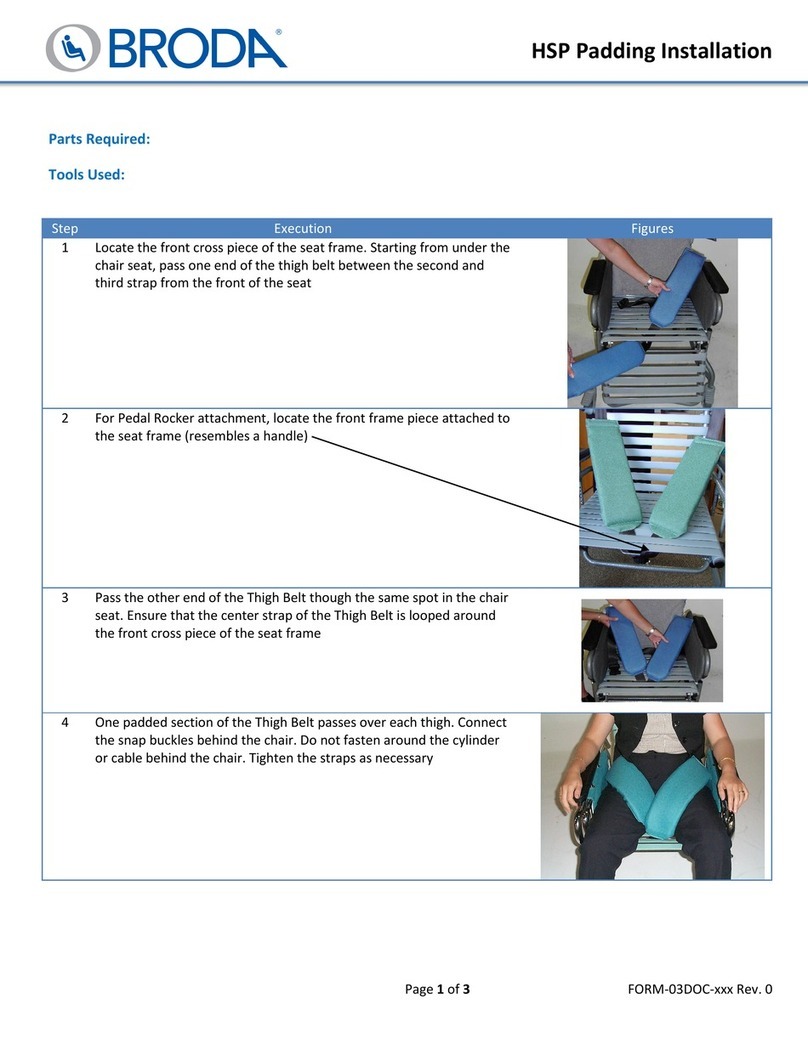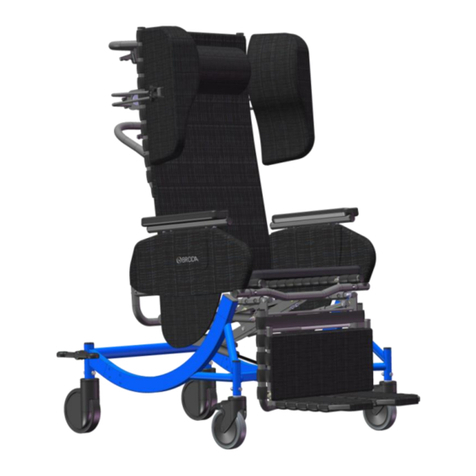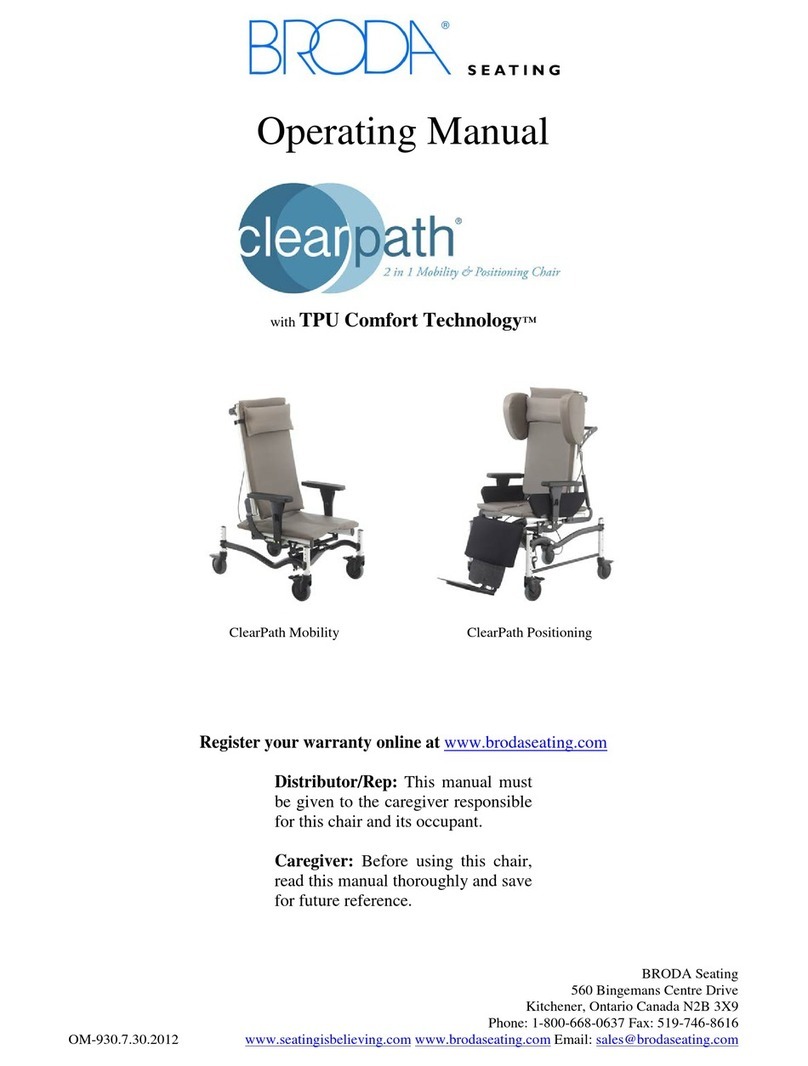
587
Tilt Wheelchair
2
TABLE OF CONTENTS
WARNING ....................................................................................................................................... 3
SPECIFICATIONS........................................................................................................................... 3
GENERAL INSTRUCTIONS........................................................................................................... 4
SECTION 1 - SAFETY REQUIREMENTS & DETAILED WARNINGS.......................................... 5
1.1 Before First Use WARNING...........................................................6
1.2 Application WARNING.....................................................................6
1.3 Legal Restrictions WARNING..........................................................7
1.4 Position of Wheelchair “Danger of Falling” WARNING....................7
1.5 Position of Seat Tilt “Danger of Tipping” WARNING........................7
1.6 Propelling and Transferring “Danger of Tipping” WARNING...........7
1.7 Wheelchair Placement “Danger of Tipping” WARNING...................7
1.8 Locking Wheels “Danger of Falling” WARNING ..............................8
1.9 Re-Positioning of Patient “Danger of Pinching” WARNING.............8
1.10 Accidental Motion “Danger of Falling or Collision” WARNING.........8
1.11 Improper Restraint Use “Risk of Serious Injury” WARNING............9
1.12 Improper Use WARNING ................................................................9
1.13 Cleaning WARNING........................................................................9
1.14 Preventative Maintenance WARNING...........................................10
1.15 Patient Specific Instructions WARNING........................................11
SECTION 2 - DEFINITIONS AND TECHNICAL INFORMAION-................................................. 13
2.1 Definitions......................................................................................13
2.2 Technical Information....................................................................13
2.3 Shipping and Storage Specifications.............................................14
2.4 Label Locations .............................................................................15
SECTION 3 - CAREGIVER MANAGEMENT................................................................................ 16
SECTION 4 - WHEELCHAIR OPERATION ................................................................................. 17
4.1 Armrests........................................................................................17
4.2 Anti Tippers and Wheel Locks.......................................................18
4.3 Seat and Back...............................................................................19
4.4 Accessories…………………………………………………………….20
4.5 Headrest........................................................................................21
4.6 Solid Seat & Drop Seat and Back..................................................22
4.7 Seat Height Adjustment.................................................................22
4.8
Seat Depth Adjustment……………………………………………..…24
SECTION 5 - WHEELCHAIR REPAIR AND MAINTENANCE..................................................... 30
5.1 Suggested Tool Kit........................................................................26
5.2 List of Commonly Replaced Parts .................................................26
5.3 Cables and Cable Handles............................................................27
5.4 Rear Wheels and Front Casters....................................................28
5.5 Gas Cylinders................................................................................30
5.6 Vinyl Straps...................................................................................32
APPENDIX 1 - BRODA WARRANTY........................................................................................... 34
...........................................................................................................................................................







































